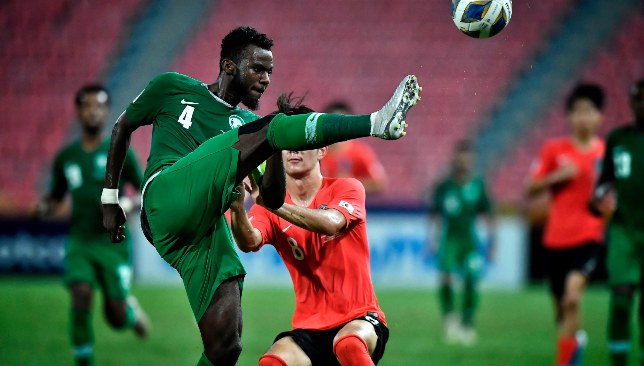
Pride and excitement greeted the return of Saudi Arabia’s 2020 AFC U-23 Championship heroes on Monday.
Saad Al Shehri’s starlets were an extra-time header from giant South Korea defender Jeong Tae-wook away from lifting the trophy. This agonising 1-0 final defeat, however, came with the considerable caveat that entry into Tokyo 2020 Olympics had already been attained.
So far, so good.
But what next for this promising batch of youngsters and can they hope to get enough game time to grow in the Saudi Professional League? There are worrying signs that short-term thinking could hinder long-term potential.
WILL THEY SHINE?
First-team exposure has been in short supply for the Saudi U-23s.
There was a stark difference in senior league appearances between them and the other three semi-finalists. This disparity can only hamper development, moving forward.
The Saudis’ 23-man squad boasted a combined 279 SPL career run-outs. This is a colossal 3.7-times less than final conqueror South Korea’s tally of 1,050.
A similar imbalance exists when compared to Uzbekistan (987), while even Australia’s total (658) was more than double.
It is damning that outstanding centre-back Hassan Tombakti, at 20-years old, has won more senior caps for Saudi Arabia (six) than played SPL matches (four).
Regulation is to blame. The SPL’s drive to generate domestic and global interest caused the foreign quota to steadily rise from 2016/17’s limit of four per team – with goalkeepers not allowed – to 2018/19’s high of eight, dropping back to seven in 2019/20.
This is an area that Al Shehri touched upon after the 1-0 semi-final victory against Uzbekistan.
He said: “The [Saudi Arabian Football] Federation has put together a good plan for this generation. We believe this generation will provide more players, more in 2022 in Qatar and in 2026.
“I think they need to play more because nobody knows about these players.
“They didn’t play much in the league in Saudi Arabia, but they came here with big goals and they fight and they made it. I hope they will have more chances to play and develop because in the Olympic Games it will not be easy.
“We will play with the best teams in the world, so this six months is important for these players to improve more. The Federation has made a good plan for this generation and in the future it will be good for Saudi Arabia.”
South Korea’s K1 League has adhered to the AFC’s ‘3+1’ system – three foreigners of any nationality, one Asian qualified. For 2020, an extra spot will be given to Association of Southeast Asian Nations [ASEAN] footballers.
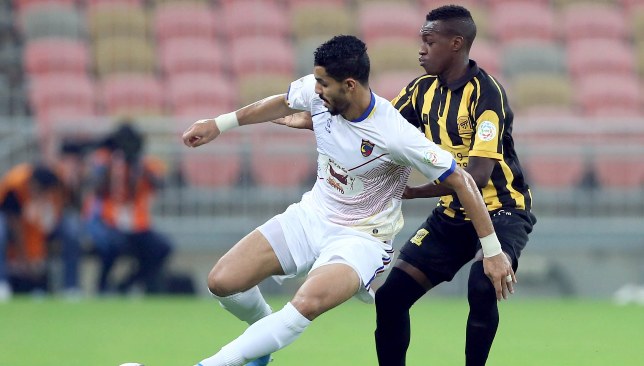
Saud Abdulhamid with Al Ittihad (r) (EPA).
Both the Uzbekistan Super League and Australia’s A-League allow up to five expatriates.
Export is a further problem.
England-raised midfielder Mukhtar Ali is now with Al Nassr after he came up at Chelsea and gained first-team experience at the Eredivisie’s Vitesse Arnhem. No other Saudis, present or historically, have made the permanent switch away.
Even 2017/18’s high-profile loaning of nine players to Spanish clubs generated a solitary substitute appearance for Al Hilal flyer Salem Al Dawsari when Villarreal played Real Madrid.
Contrast this to South Korea being blocked by Valencia from calling up 2019 U-20 World Cup Golden Ball winner Lee Kang-in for this month’s event, or Australia possessing nine Europe-based players.
THE TOURNAMENT
The junior Green Falcons left a strong impression throughout their three-week stint in Thailand.
Al Shehri’s players didn’t cut swathes in the opposition, despite boasting senior starter Abdullah Al Hamdan, of Al Shabab, up top. Only five goals were scored, with Al Ahli Jeddah forward Abdulrahman Ghareeb’s late penalty in the opening 2-1 victory against Japan heavily assisted by a contentious call from the video assistant referee.
The lack of threat would hurt them in a tense showpiece of few, genuine, chances, settled by Jeong’s connection with Lee Dong-gyeong’s pinpoint free-kick at Bangkok’s Rajamangala Stadium.
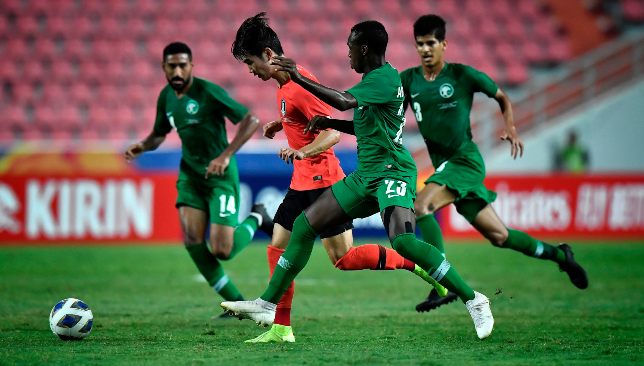
South Korea v Saudi Arabia in the final.
They were, instead, superbly drilled and possessed of notable composure. This method proved enough to top a competitive Group B that also included Qatar (0-0) and Syria (1-0), plus keep clean sheets in two of their three knockout clashes – 1-0 triumphs versus hosts Thailand and an Uzbekistan who had hammered the UAE 5-1.
Tombakti, on loan at Al Wehda from Shabab, emerged as a player of the tournament. Partnered by Ahli’s Abdulbasit Hindi, they’d concede only twice in six matches to comfortably boast the best defence.
It also helped that they were guarded by Al Fateh defensive midfielder Ali Al Hassan and flanked by ceaseless Al Ittihad right-back Saud Abdulhamid.
THE WIDER CONTEXT
A second-ever Olympics appearance – the first coming 24 years ago – and 2018’s ending of a 12-year absence from the World Cup evidence the substantial strides taken.
Especially, when allied with Al Hilal’s conquering of the AFC Champions League in November. This terminated a drought from the Kingdom’s clubs that stretched back to Al Ittihad in 2005.
Commendation must also be awarded to the changes sparked by Saudi Arabian Football Federation technical director Jan van Winckel upon his August 2015 hiring.
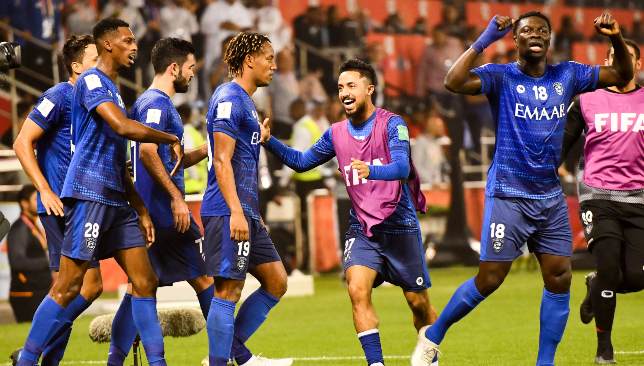
Star-studded Al Hilal at December’s Club World Cup (EPA).
His impact is attested by success at the 2018 AFC U-19 Championship. The Saudis, further, competed in the 2017 and 2019 U-20 World Cups, after missing five of the previous six editions.
There is also the promise provided by the General Sports Authority’s July launch of an ‘elite performance centre’ in Spain.
This initiative will see 30-40 of the country’s best Under-20 prospects play a minimum of 40 games against elite clubs, plus invite European scouts to watch them in action with a view to loan switches.
May 2018’s injection of $340 million by Crown Prince Mohammed bin Salman bin Abdulaziz Al Saud has, dramatically, raised the domestic standard. This cash covered, both, extensive debts and investments.
Ex-France centre forward Bafetimbi Gomis, former Italy maestro Sebastian Giovinco and prolific Moroccan centre forward Abderrazak Hamdallah – 2019’s global top scorer with 57 goals – light up a burgeoning competition that has already crashed through the 1m-mark for attendance in 2019/20.
Proponents will argue this influx of elite, foreign footballers has provided a fine example to young Saudis, while also ensuring only the very best residents feature.
In reality, successive senior bosses have struggled to adequately fill the specialised positions of goalkeeper and centre forward.
CONCLUSION
There is always a price to be paid for such rapid progress.
In the SPL, it’s unquestionably come in the guise of limited minutes for kids.
This is a complex situation that Saudi first-team boss Herve Renard is, also, fully aware of. The Frenchman is reported to be pushing SPL organisers to cut the foreign quota again for 2020/21.
Without any current prospect of these youth stars being sold to foreign leagues, there is real danger arrested development means they remain standout juniors rather than elite seniors.
A mixed start to World Cup 2022 qualifying further points to a perilous approach.
Talent is, clearly, not the issue. Their results in Thailand prove this.
Opportunity is the glaring problem.
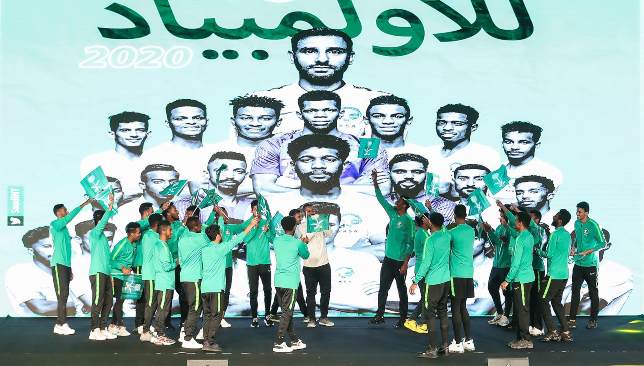
Saudi Arabia U-23 homecoming ceremony (Twitter/@SaudiNT).